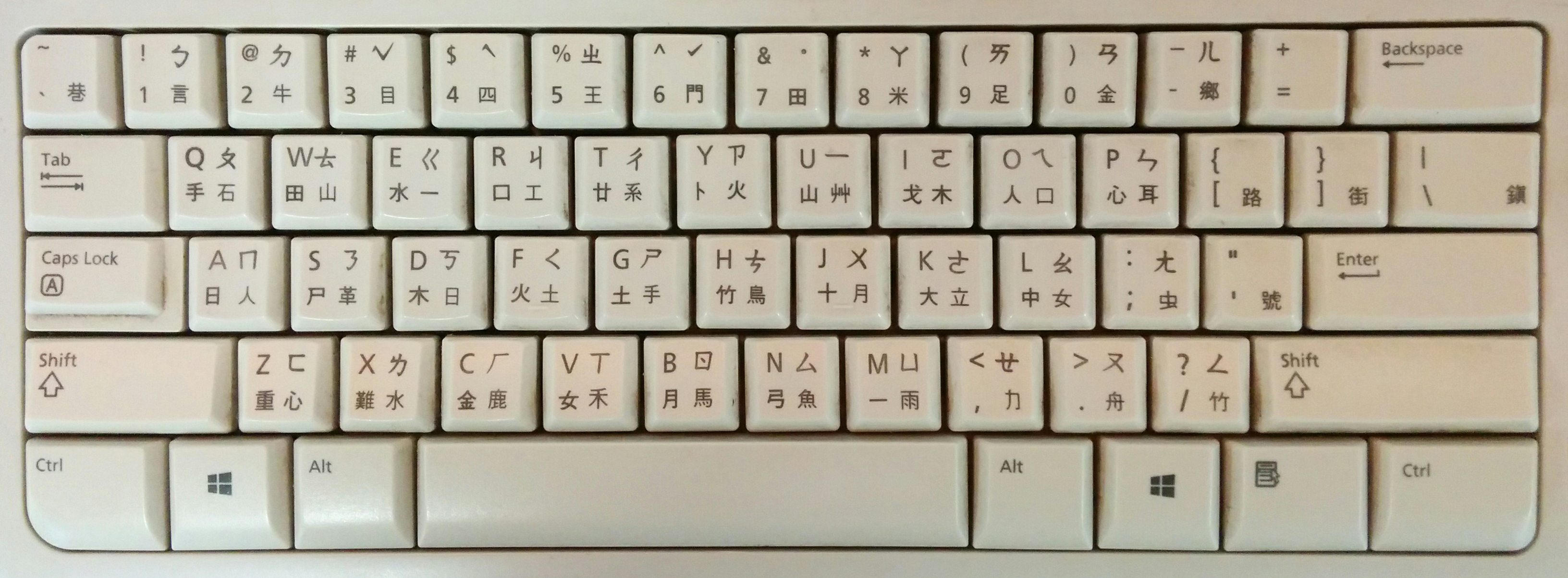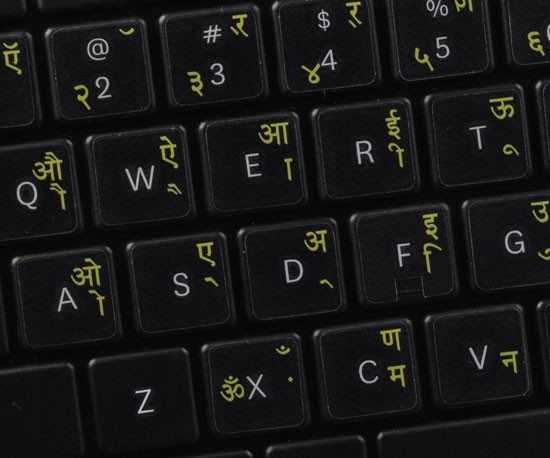-
Chinese Keyboard For Mac카테고리 없음 2020. 10. 27. 05:56
On your Mac, first set up the input source (add Pinyin - Simplified and, if desired, Handwriting - Simplified). Click the Input menu in the menu bar, then do one of the following. Choose Pinyin - Simplified to use the keyboard. If your Mac has a Touch Bar and you customized the Control Strip to add the Input Sources button, tap it to select Pinyin - Simplified. Chinese to Pinyin converter. This Chinese Keyboard enables you to easily type Chinese online without installing Chinese keyboard.You can use your computer keyboard or mouse to type Chinese letters with this virtual keyboard. Pressing Esc on the Chinese keyboard layout will toggle the mouse input between virtual QWERTY keyboard and virtual Chinese keyboard. Chinese Keyboard Sticker for PC, Laptop, Computer Keyboards, iMac (Labels on Black Background, Yellow/White Letters) 4.1 out of 5 stars 49. Get it as soon as Sat, Oct 3. FREE Shipping on your first order shipped by Amazon. Apple Magic Keyboard (Wireless, Rechargable) (Traditional Chinese, Cangjie & Zhuyin) - Silver.
Sign up to get my best Chinese learning tips: http://bit.ly/1IVAB0y. Adding the 'ABC - Extended' keyboard on Mac OS. The 'ABC - Extended' keyboard is the input method you'll need to select when you want to type pinyin with tone marks. On older Mac operating systems, this may also be called the 'U.S. Extended' keyboard. Here are step-by-step instructions for adding the ABC - Extended keyboard on Mac OS: 1: Open.
 Als u deze regelaar wijzigt, wordt deze pagina automatisch bijgewerkt
Als u deze regelaar wijzigt, wordt deze pagina automatisch bijgewerktChinese and Cantonese Input Method User Guide
With the Pinyin - Simplified input source, you can enter Simplified Chinese characters using Pinyin phonetic input codes.
Enter Chinese characters using Pinyin - Simplified
On your Mac, first set up the input source (add Pinyin - Simplified and, if desired, Handwriting - Simplified).
Click the Input menu in the menu bar, then do one of the following:
Choose Pinyin - Simplified to use the keyboard.
If your Mac has a Touch Bar and you customized the Control Strip to add the Input Sources button , tap it to select Pinyin - Simplified.
Choose Handwriting - Simplified to use the trackpad.
If your Mac has a Touch Bar and you customized the Control Strip to add the Handwriting button , tap it to select Handwriting - Simplified. See Use Trackpad Handwriting to write Chinese.
In an app, do any of the following:
Enter Pinyin: Type the input codes for the characters you want to use, then select the characters in the Candidate window. For example, to enter 苹, type “ping”, then select 苹 in the window.
Enter Full Pinyin (Quanpin): Type the input codes for the characters you want to use, then select the characters in the Candidate window. For example, to enter 西安, type “xi’an”, then select 西安 in the window.
Use an apostrophe to separate syllables that have ambiguous parsings. Full Pinyin has modifications that make typing more convenient; for example, “v” is used to replace “ü” (so to enter 绿, you would type “lv”).
Enter Abbreviated Pinyin (Jianpin): Type the consonant of each syllable in an input code, then select characters in the Candidate window. For example, to enter 计算机, type “jsj” (the input code is “jisuanji”).
You can use both full and abbreviated Pinyin in the same conversion. For example, if you type “pingguogs” with “gongsi” abbreviated to “gs”, the result is still “苹果公司”.
Enter Structural Pinyin (Chaizi): Type a Chaizi input code with two or more syllables, then press Shift-Space bar. For example, type “jiji”, then press Shift-Space bar. The Candidate window opens, and the first candidates shown in the Composition pane are 喆, 兓, and 旣.
With structural Pinyin, each syllable of the input sequence is treated as the Pinyin for one of the components in the character (in order from left to right and top to bottom).
Show the keyboard layout: Click the Input menu in the menu bar, then choose Show Keyboard Viewer.
If the menu item isn’t shown, choose Apple menu > System Preferences, click Keyboard, click Keyboard, then select “Show keyboard and emoji viewers in menu bar.”
Chinese Keyboard Download For Mac
Enter Chinese characters using Stroke with Pinyin - Simplified
Add Chinese Keyboard Mac
On your Mac, first set up the input source (add Pinyin - Simplified and, if desired, Handwriting - Simplified).
Click the Input menu in the menu bar, then do one of the following:
Choose Pinyin - Simplified to use the keyboard.
If your Mac has a Touch Bar and you customized the Control Strip to add the Input Sources button , tap it to select Pinyin - Simplified.
Choose Handwriting - Simplified to use the trackpad.
If your Mac has a Touch Bar and you customized the Control Strip to add the Handwriting button , tap it to select Handwriting - Simplified. See Use Trackpad Handwriting to write Chinese.
In an app, use a prefix key (u), followed (without a space) by the stroke input code for a character. For example, you can type the following:
Stroke within Pinyin
Keyboard key
一
H
丨
S
丿
P
丶(乀)
N
乛(乙)
Z
*wildcard
X
If you type “unnzzsh”, you get 字 as the first candidate.
You can also add words to your user dictionary to save time when you need to type the same word again.

You may need to change preferences, for example, to show predictive completions or to change the orientation of the Candidate window.
See alsoUse the Candidate window to type Chinese or Cantonese on MacEnter Chinese punctuation and special characters on MacEnter full-width Latin characters with a Chinese input method on MacConvert Chinese or Latin characters on MacFind Chinese input codes for characters on Mac
Chinese and Cantonese Input Method User Guide
Chinese Typing Download
With the Pinyin - Simplified input source, you can enter Simplified Chinese characters using Pinyin phonetic input codes.
Enter Chinese characters using Pinyin - Simplified
On your Mac, first set up the input source (add Pinyin - Simplified and, if desired, Handwriting - Simplified).
Click the Input menu in the menu bar, then do one of the following:
Choose Pinyin - Simplified to use the keyboard.
If your Mac has a Touch Bar and you customized the Control Strip to add the Input Sources button , tap it to select Pinyin - Simplified.
Choose Handwriting - Simplified to use the trackpad.
If your Mac has a Touch Bar and you customized the Control Strip to add the Handwriting button , tap it to select Handwriting - Simplified. See Use Trackpad Handwriting to write Chinese.
In an app, do any of the following:
Enter Pinyin: Type the input codes for the characters you want to use, then select the characters in the Candidate window. For example, to enter 苹, type “ping”, then select 苹 in the window.
Enter Full Pinyin (Quanpin): Type the input codes for the characters you want to use, then select the characters in the Candidate window. For example, to enter 西安, type “xi’an”, then select 西安 in the window.
Use an apostrophe to separate syllables that have ambiguous parsings. Full Pinyin has modifications that make typing more convenient; for example, “v” is used to replace “ü” (so to enter 绿, you would type “lv”).
Enter Abbreviated Pinyin (Jianpin): Type the consonant of each syllable in an input code, then select characters in the Candidate window. For example, to enter 计算机, type “jsj” (the input code is “jisuanji”).
You can use both full and abbreviated Pinyin in the same conversion. For example, if you type “pingguogs” with “gongsi” abbreviated to “gs”, the result is still “苹果公司”.
Enter Structural Pinyin (Chaizi): Type a Chaizi input code with two or more syllables, then press Shift-Space bar. For example, type “jiji”, then press Shift-Space bar. The Candidate window opens, and the first candidates shown in the Composition pane are 喆, 兓, and 旣.
With structural Pinyin, each syllable of the input sequence is treated as the Pinyin for one of the components in the character (in order from left to right and top to bottom).
Show the keyboard layout: Click the Input menu in the menu bar, then choose Show Keyboard Viewer.
If the menu item isn’t shown, choose Apple menu > System Preferences, click Keyboard, click Keyboard, then select “Show keyboard and emoji viewers in menu bar.”
Enter Chinese characters using Stroke with Pinyin - Simplified
On your Mac, first set up the input source (add Pinyin - Simplified and, if desired, Handwriting - Simplified).
Click the Input menu in the menu bar, then do one of the following:
Choose Pinyin - Simplified to use the keyboard.
If your Mac has a Touch Bar and you customized the Control Strip to add the Input Sources button , tap it to select Pinyin - Simplified.
Choose Handwriting - Simplified to use the trackpad.
If your Mac has a Touch Bar and you customized the Control Strip to add the Handwriting button , tap it to select Handwriting - Simplified. See Use Trackpad Handwriting to write Chinese.
In an app, use a prefix key (u), followed (without a space) by the stroke input code for a character. For example, you can type the following:
Stroke within Pinyin
Keyboard key
一
H
丨
S
丿
P
丶(乀)
N
乛(乙)
Z
*wildcard
X
If you type “unnzzsh”, you get 字 as the first candidate.
You can also add words to your user dictionary to save time when you need to type the same word again.

You may need to change preferences, for example, to show predictive completions or to change the orientation of the Candidate window.
Chinese Keyboard Download For Pc
See alsoUse the Candidate window to type Chinese or Cantonese on MacEnter Chinese punctuation and special characters on MacEnter full-width Latin characters with a Chinese input method on MacConvert Chinese or Latin characters on MacFind Chinese input codes for characters on Mac